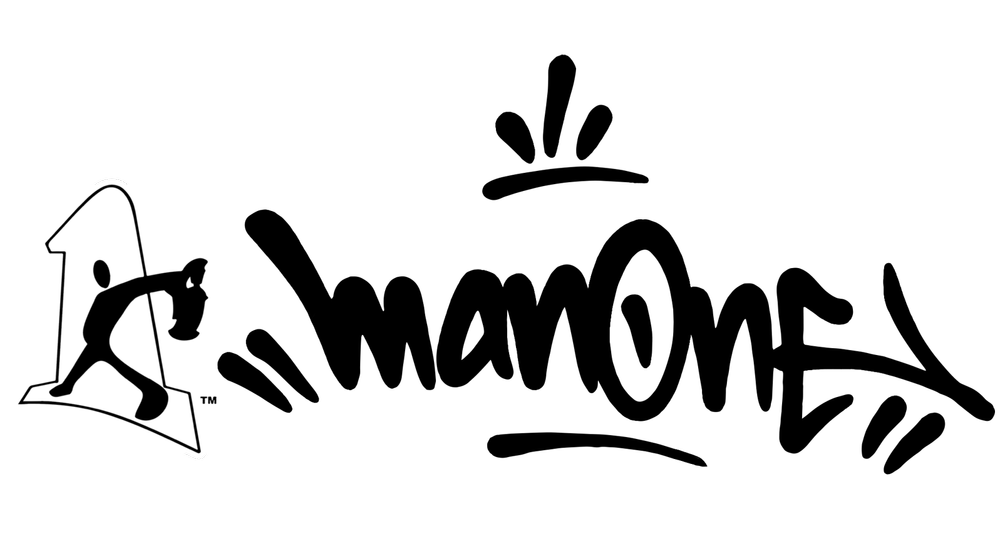Over the weekend, muralist and graffiti artist Man One tweeted out an image of César E. Chávez to note the civil rights leader's birthday on March 31. The detail came from a mural he painted that, by design, was not intended to last beyond the construction phase for the Gold Line Eastside Extension.
Looking back, it was a memorable piece -- though unfortunately temporary.
"The Four Pillars" commission was announced by Metro in April 2006, recalls Man One, aka Alex Poli. "I picked four pillars of community who were people who passed away and meant something to me."
The four sections featured Sister Karen Bocalerro, founder of Self-Help Graphics in "Faith;" slain journalist Ruben Salazar in "History," César E. Chávez in "Trabajo" (work); and Man One's grandfather Miguel Arenas, Sr., appearing in the panel "Familia" (Family).
The urban street lettering on the 20-foot high panels was the usual non-readable application, touted by Metro as an urban art style that makes the mural "relevant to the youth who viewed the walls on a daily basis." The four portraits were less an abstraction, and more pop graphic art. With animated colors, the figures watched over the corner like they belonged to the neighborhood. The simple lines allowed the faces to be visually read from across the street or from inside a moving car -- or aboard a Metro bus.
"I paint portraits the way I fill in my graff letters . . .with bold colors and odd shapes," Man One explained over the weekend. "I never use black and white."
When the Gold Line Eastside Extension neared completion, the plywood fences were removed and the portraits were salvaged by Man One. The panels that made César E. Chávez were donated to the Social Public Art and Resource Center (SPARC), and the image of Sister Karen Boccalero was sent to Self-Help Graphics. Man One still has the portraits of Salazar and of his grandfather.
Ten Years Running
"The Four Pillars" was just one project in a prolific decade for Man One. The year the mural was completed, he opened the doors to his downtown Los Angeles gallery, Crewest Gallery,originally founded in Alhambra in 2002. In May, Crewest will celebrate its tenth anniversary by mounting an exhibition aptly named "Mission: Accomplished."
After graduating with a B.A. in Fine Arts from Loyola Marymount University, he built a body of work before going through traditional channels to exhibit it. Gallery directors told him graff did not belong in their spaces, recalls Man One, now 41. "All the shows I had were in alternative spaces."
"I know this stuff is legit and will sell," he recalls telling himself and others.
Back then, some may have wondered how much aerosol fumes did he accidentally sniff when he thought of opening a gallery to showcase works from a collective of rotating street artists -- sometimes placing his own work aside -- to redefine graff art as a legitimate form of fine art with its own richness and complexity.
Ten years later, that is still the mission for the gallery that was founded to help street artists make a one-name moniker for themselves -- and even introduced a few to the art world. (Australia's Dabs & Myla had their first U.S. showings at Crewest).
Crewest is also one of the few downtown art spaces left from the first wave of galleries in the middle of the last decade, and Man One recently came to terms with Canadian Building ownership for a new lease -- plus securing the alley wall so it can be used for a revolving mural.
He has not lost his street bite. He recently completed a self-commissioned piece, "Graffiti Spirit Over City Hall," showing City Hall being raided by an unidentified figure with a spray can, a personal statement about graffiti artists who "forced themselves" into the current mural moratorium discussions about what is public art.
Former Member of the Underground
Man One being well-known as an artist almost conflicts with his street nature, that like other graffiti artists, prefer to keep an underground image and identity.
"I am surprised how many people recognize me. It's kinda weird and happens a lot of places," said Poli. "When I started doing graffiti, you didn't tell anyone who you were. It was a secret community. That changed big time over the years."
Yet, he doesn't rely on being known to move forward. He will seek out art enclaves in other cities and visit galleries and introduce himself with no presumption he's known. But fans of street artists do, and even if they don't recognize him right away, they know the name Man One.
That includes gallery owners now eager to get some street art on their walls.
In April 2012, Crewest will open "Sinerlandia" and "Painted Beauty," two small solo shows that debut Siner and Michael Pizarro, respectively. Opening reception is Saturday, April 7 from 7 to 10 p.m. It runs through through April 29.
"Mission Accomplished" showcases works from artists who have appeared at Crewest in the last decade. In the front room, a micro-solo show, "A Decade of Graffiti Spirits," features new visual directions from Man One himself. It opens Saturday, May 5, from 7 to 10 p.m. It runs through May 27.
Above: César E. Chávez in "Trabajo" from "The Four Pillars." (2006) at E. First and Soto street. Photo Courtesy of Man One.
Below: Man One painting "Graffiti Spirit Over City Hall" in March, 2012.
Direct link from KCET blog:
Crewest Gallery to Celebrate 10 years of Murals and Mayhem
+++++









